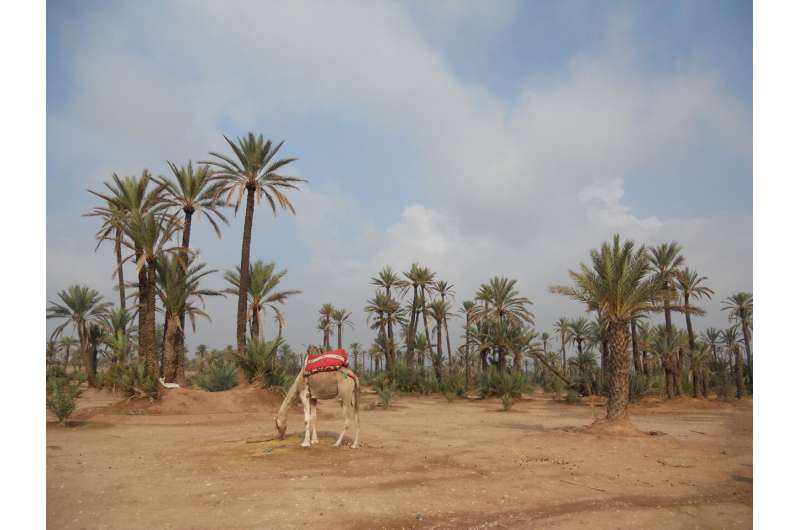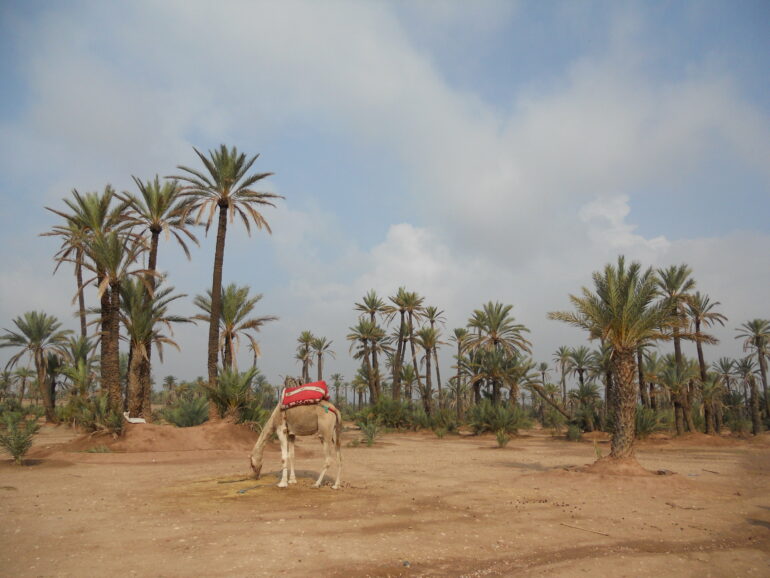A research team led by Prof. Dr. Klement Tockner, Director General of the Senckenberg Gesellschaft für Naturforschung and Professor of Ecosystem Sciences at the Goethe University Frankfurt, has investigated the relationship between cultural and biological diversity for selected oases in the Sahara.
In their study, now published in the journal PLOS ONE, the researchers show that oases are centers of biocultural diversity, using Algeria as a concrete example. Since culture and biodiversity are particularly closely linked in these unique desert habitats, they should be considered together when it comes to measures for sustainable use and protection, postulate the researchers.
Arid regions are home to diverse nomadic cultures, a unique diversity of fauna and flora, and a quarter of the world’s languages. While species richness in arid areas is lower than in humid habitats such as tropical forests, deserts are home to a variety of particularly well-adapted and unique animals and plants. At the same time, diversity within species is especially pronounced due to the varying features and the isolation of individual ecosystems. Oases—green, fertile islands within desert areas—play a central role in this.
“Foroases in the Sahara, the diversity of agriculturally used plant and animal species is particularly important,” explains the study’s corresponding author, Dr. Juan Antonio Hernández-Agüero, a former scientific assistant at the Senckenberg Research Institute and Natural History Museum in Frankfurt who now works at the VrijeUniversiteit Amsterdam.
“Date palm oases are a typical example. In addition to the economic importance of the fruits, they exhibit high genetic diversity and provide habitats and refuges for a variety of animals. Here, the close link between the evolution of human culture and biodiversity is particularly evident.”
To better understand the potential mechanisms of biocultural diversity in the Sahara, the scientists took a closer look at Algeria’s oases and analyzed the interrelationships among various factors of biological and cultural diversity—such as the number of animal and plant species and the number of ethnic groups and languages.
“We studied 77 very different oases and 18 oasis groups. Collectively, the oases harbor 552 plant species, 14 amphibian species, 328 bird species, 98 mammal species, and 72 reptile species, although the diversity can be much higher. In addition, the Algerian oases are home to twelve ethnic populations, each speaking their own language, including five endangered languages,” says Hernández-Agüero.
“Thus, of the total of 22 languages found in Algeria—a country with only moderate diversity from a global perspective—over half are spoken in oases. Eight out of 10 endangered large vertebrate species in the Sahara-Sahel region find refugia here. Oases are obviously of immense importance for the biocultural diversity of the entire country. Moreover, at the level of individual oases, we found a strong correlation between the number of species and languages.”

Over many generations, traditional local cultivation practices have ensured the protection of biodiversity – for the sustainable use of oases, culture and nature should be considered together. Pictured here: Marrakech, Morocco. © Muriel Gros-Balthazard
Globalization processes, the industrialization of agriculture, and tourism increasingly contribute to changes in the Sahara’s oases as well. Besides traditional produce such as dates and olives, tomatoes and other vegetables are increasingly being grown there for hotels and restaurants. This is exacerbated by activities such as oil drilling and uranium mining.
“Over countless generations, traditional local cultivation practices have ensured the protection of biodiversity,” explains Prof. Dr. Klement Tockner. “It is therefore crucial to consider biological and cultural diversity together in order to sustainably use as well as protect oases in the Sahara—and also globally—in terms of their diversity and importance for humans. After all, around 450 million people in North Africa and Asia live in or near oases. Because of their natural resources, oases are among the most densely populated habitats in the world. And they are more severely threatened than ever before.”
“The concept of biocultural diversity supports a holistic and interconnected view of nature and humans,” adds Hernández- Agüero. “Our study is intended as an impetus for a more profound analysis of the mechanisms of biocultural diversity in oases in order to develop the best possible sustainable use and protection concepts for these unique habitats,” he concludes.
More information:
Laura Tydecks et al, Oases in the Sahara Desert–Linking biological and cultural diversity, PLOS ONE (2023). DOI: 10.1371/journal.pone.0290304
Provided by
Senckenberg Research Institute and Natural History Museum
Citation:
Oases are hotspots of biological and cultural diversity—study suggests culture and biodiversity are interlinked (2023, September 1)



